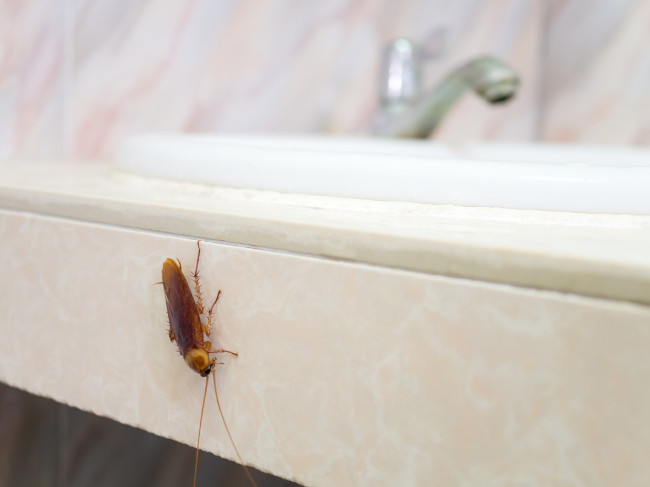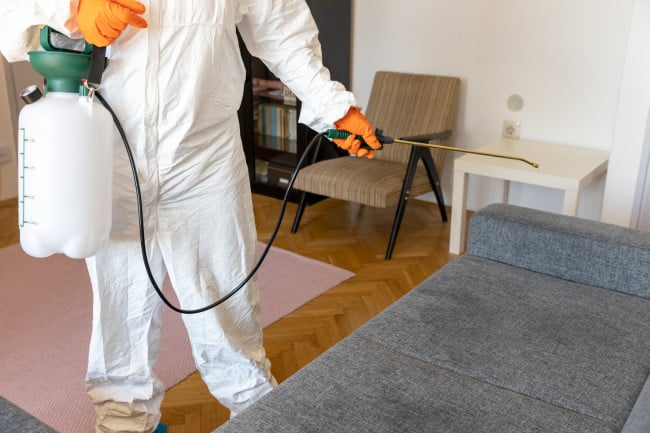How do I get f_____g mice out of my NYC apartment? A Q&A with a pest expert
- "Traps and rodenticides are useful. Steel wool is for amateurs. Plug ins are a waste of money."

When mice made a cozy home in her Ugg boots, this writer considered it a declaration of war.
iStock
About 20 years ago, before anyone in the U.S. knew what they were, a friend gifted me a pair of Uggs that she bought in Australia. I loved those cozy, waterproof, and comfortable boots. I use the past tense because when I took them out of the closet this year, I found that each boot had been turned into a cozy mouse condo. My Uggs were now ughs and I had to throw them away.
I’ve had mice in my apartment before. Everyone in New York City has, whether they’re willing to admit it or not, but the Ugg take over was a declaration of war.
For help getting rid of my rodent tenants, I reached out to Gil Bloom, president of Standard Pest Management, a fourth-generation owned-and-operated business. He is an entomologist and was a CUNY faculty member for over 20 years, where he taught entomology and pest control technology.
Here’s what I asked Bloom and his advice for getting rid of those f____g mice.
Has the mouse population in NYC grown since the pandemic?
Absolutely. There’s such an abundance of food around for them and more people are eating meals in more places at home. Consider this: Mice don’t need much food to thrive. Three grams of food per day is plenty. A crumb will do. That leftover bit of quiche crust on your desk in your bedroom office—that’s plenty. A quarter of a saltine and they’re set for the day. And they don’t need water, they can extract it out of the grains they eat.
Mice mature sexually in eight weeks and one female can reproduce eight times in a year. That’s one mouse with 56 offspring. The numbers are in their favor.
How did mice get into my apartment in the first place?
One of two ways, either as “captives” or “volunteers.” The captives are the ones that come into an apartment in bulk packages, like rice. Some ride in on appliances. The fridge that your super brought up for you from the basement is a perfect vehicle. The voluntary visitors often follow the path of other mice that have been living there; they follow pheromone trails. Mice are opportunistic. They want food and warmth and will go wherever they can find both.
They often move along pipes and when there’s a renovation in a building, mice will relocate. Often contractors doing kitchen renovations don’t seal holes well enough, so resident mice set out to find a new, more comfortable home. That could be your apartment.
How can I keep them out?
Make sure that the voluntary visitors can’t get in by sealing off entrances to your apartment and do everything you can to deprive them of the warmth and food that they’re looking for. Don’t leave any food exposed in the kitchen or anywhere else in the apartment. Put leftovers in the trash and dispose of them right away. Don’t leave your dog or cat food out, ever. (For more tips on pest proofing, go here and scroll to pages 15-18.)
Think about all the places that they might enjoy settling. For instance, many people store shopping bags alongside the fridge. Don’t. It’s a perfect spot for mice; they love the warmth of the fridge’s motor.
A favorite route into an apartment is via the gas and plumbing lines. And then there are the holes…
Speaking of the holes, is it true that a mouse can get into an opening as thin as a dime?
It depends on the angle, but they can get into any hole that’s at least a quarter of an inch. Those fur coats make them look bigger than they are. If their head can go through a hole, the rest of the body will follow. If there’s heat and/or food at the other end of the hole, they’ll make the trip.
Where are they liable to nest (other than boots)?
A couch is a perfect spot. There’s food in the crevices of the upholstery and nice cozy insulation inside that they’ll use to make a nest. They like the space under the oven, under the fridge. In offices, they like the vending machines—warmth and food all within a small space. Mice don’t travel very far, generally no more than 50 feet. Rats conduct their lives within a 650-foot space. Once mice have found a comfortable spot, they want to stay.
If I get them out of my unit, will they stay out?
To fight rodents, it takes a real commitment and a concerted effort. It takes work. To pest proof your fridge you need to remove all sources of clutter around it; sweep and vacuum behind and under it, clean the food residue, dirt, and dust from behind and under it. And that’s only the fridge.
I tell the building managers who hire me to get rid of their pests that they’ll hate me and want to fire me.
Traps and rodenticides are useful. Steel wool is for amateurs. Copper gauze, stainless steel, and cement is what is needed instead. The best approach is multi-faceted. In the end, it’s about taking away the rodents' resources and excluding them from your space.
Plug ins? They don’t work except in a limited and controlled lab environment. If you plug one in over your counter, it might keep mice away from a small part of the counter but for the most part, plug ins are a waste of money. Mint garbage bags, too. And expandable foam is useless. It won’t work as a sealant.
Getting rid of mice takes a building-wide effort. Every apartment and the entire basement have to be rodent-proofed before any lasting results are possible.
You Might Also Like



























